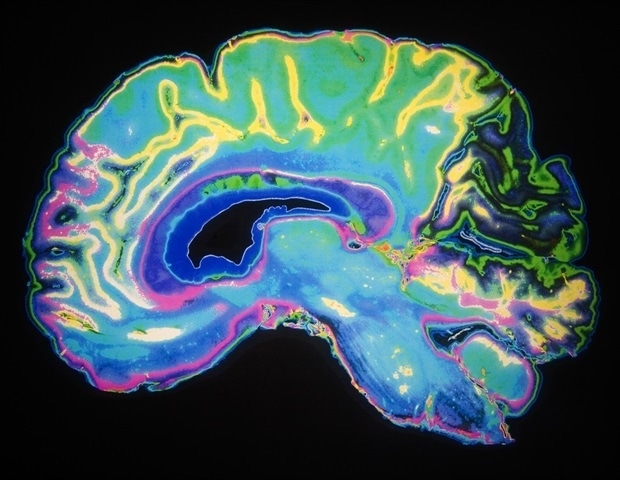
Rising contaminants from rubber tires N-(1,3-Dimethylbutyl)-N’-phenyl-p-phenylenediamine (6PPD) and its oxidation product 6PPD-quinone (6PPDQ)-are elevating new crimson flags for aquatic ecosystems. A current examine reveals that extended publicity to those chemical compounds at environmentally sensible ranges disrupts lipid and carbohydrate metabolism, causes liver harm, and alters behavioral patterns in zebrafish. The analysis reveals that 6PPD primarily accumulates within the liver, whereas 6PPDQ targets the mind. Each compounds downregulate PPARγ, a key regulator of metabolic perform, and elevate pro-inflammatory cytokines, triggering continual toxicity. Notably, 6PPDQ proved extra damaging than its precursor, suggesting that transformation merchandise could pose even higher dangers. The findings level to a urgent want for tighter regulation and environmental surveillance of tire-derived pollution.
N-(1,3-Dimethylbutyl)-N’-phenyl-p-phenylenediamine (6PPD), an antioxidant extensively utilized in automobile tires, performs a vital function in stopping rubber degradation below stress. But, when launched into the surroundings, it oxidizes into 6PPD-quinone (6PPDQ)-a compound now discovered globally in highway runoff and floor waters. Prior analysis has linked each chemical compounds to developmental and systemic toxicity in aquatic organisms, however the mechanisms behind their long-term effects-particularly on liver perform and neurobehavior-remain poorly outlined. Zebrafish, as a result of their genetic similarity to people and suitability for toxicological research, present a strong mannequin for tracing these results. Given rising considerations, a deeper investigation into the bioaccumulation and continual organ-specific toxicity of each 6PPD and 6PPDQ was urgently warranted.
In a examine (DOI: 10.1016/j.ese.2025.100567) revealed April 29, 2025, in Environmental Science and Ecotechnology, researchers from South China Agricultural College and collaborators detailed how tire-derived compounds intrude with liver and neurological capabilities in zebrafish. By integrating toxicokinetic monitoring, transcriptome profiling, and molecular interplay assays, the crew in contrast the impacts of 6PPD and 6PPDQ. Their outcomes revealed that whereas 6PPD accumulates extra closely in liver tissue, 6PPDQ induces extra extreme liver injury. These findings spotlight distinct toxicity pathways, and recommend potential dangers lengthen past fish to people and different species uncovered to tire-associated chemical compounds in aquatic environments.
In managed three-month exposures, zebrafish confirmed clear variations in tissue accumulation and physiological injury. 6PPD localized primarily within the liver, whereas 6PPDQ was concentrated within the mind. Each compounds impaired progress and swimming habits and induced seen liver abnormalities corresponding to steatosis and cell degeneration. Enzyme assays revealed elevated ranges of liver harm markers (alanine aminotransferase, aspartate aminotransferase, alkaline phosphatase) and oxidative stress indicators (malondialdehyde, reactive oxygen species), alongside depleted antioxidant enzymes (superoxide dismutase, glutathione peroxidase-Px). Transcriptomic evaluation confirmed widespread disruptions in metabolic pathways, particularly genes associated to lipid synthesis, glycolysis, and ldl cholesterol regulation. Each chemical compounds suppressed Peroxisome Proliferator-Activated Receptor Gamma (PPARγ) and upregulated inflammatory cytokines TNF-α and IL-6, with 6PPDQ exerting stronger molecular binding to PPARγ as proven by simulations and floor plasmon resonance checks. These results collectively mirror the onset of nonalcoholic fatty liver illness, elevating ecological and toxicological alarm.
This examine highlights the hidden risk posed by rubber-derived pollution in city runoff. Our findings reveal that even low-level, long-term publicity to 6PPD and its oxidation product can severely disrupt liver metabolism and habits in aquatic species. Notably, the transformation product 6PPDQ displays higher toxicity than its precursor, which has vital implications for regulatory monitoring and air pollution management.”
Dr. Liangfu Wei, senior creator of the examine
Dr. Wei emphasised the necessity for environmental danger assessments to incorporate each dad or mum compounds and their transformation merchandise in regulatory evaluations.
These outcomes supply essential insights for environmental danger administration and regulatory coverage. The identification of PPARγ interference and metabolic disruption supplies a molecular foundation for continual toxicity surveillance. Differentiating the poisonous profiles of 6PPD and 6PPDQ highlights the significance of together with chemical derivatives in hazard evaluations. The findings name for strengthened city runoff management and the event of superior water remedy techniques to curb aquatic publicity. Given the conservation of metabolic pathways throughout vertebrates, the examine additionally raises broader considerations in regards to the long-term well being results of tire-derived contaminants on people via contaminated water sources.
Supply:
Journal reference:
Jiao, F., et al. (2025). Continual Toxicity Mechanisms of 6PPD and 6PPD-Quinone in Zebrafish. Environmental Science and Ecotechnology. doi.org/10.1016/j.ese.2025.100567.

